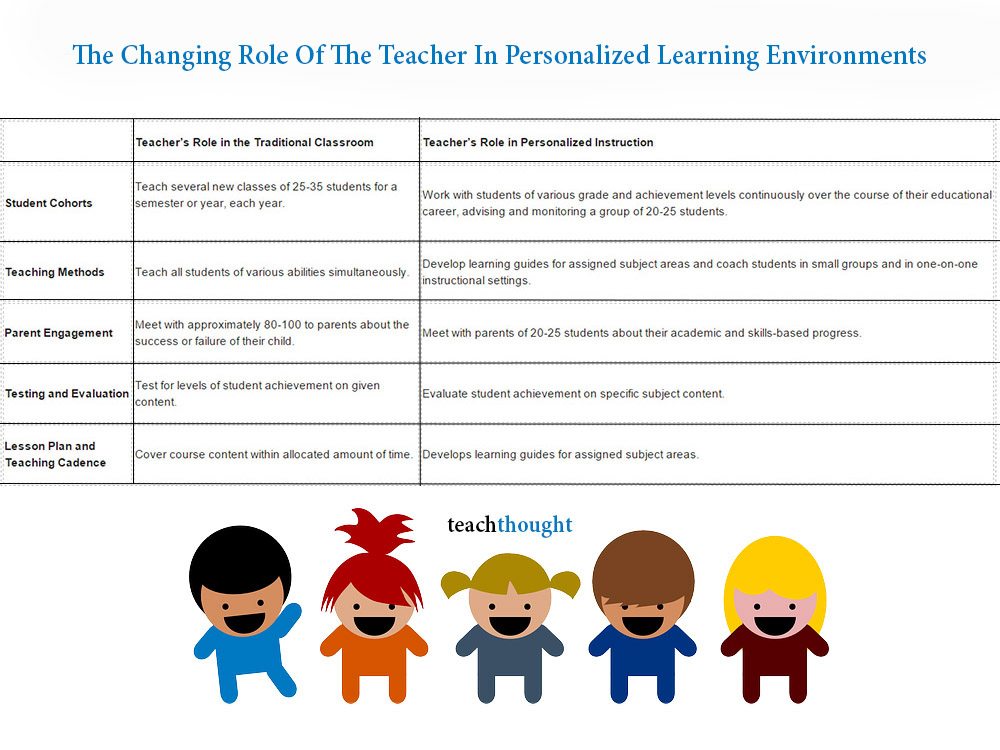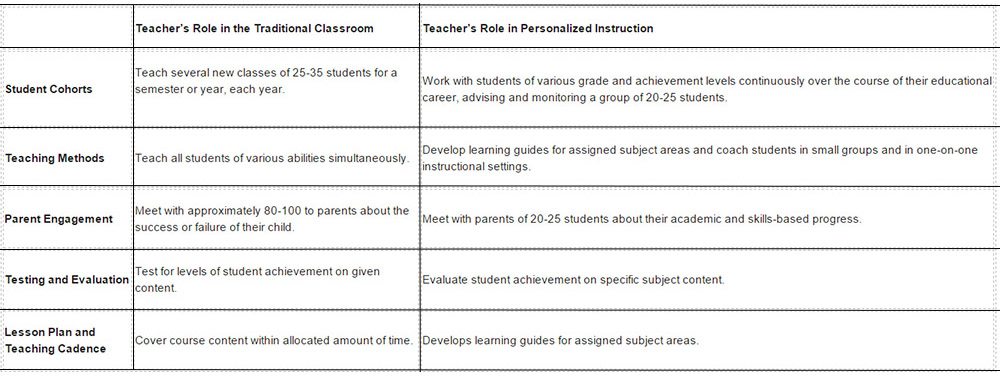
How The Teacher’s Role Is Changing In Personalized Learning Environments
contributed by Amy Moynihan, Ph.D. Candidate at The University of Virginia via Hanover Research
Today’s students are studying and learning differently – a change confirmed by the widespread adoption of digital studying. Our recent study found that 81% of college students use mobile devices (such as smartphones and tablets) to study, the second most popular device category behind laptops and up 40 percent in usage since 2013.
Further, research validates the use of mobile technology in education. In fact, our same study found that 77% of college students feel the use of adaptive technology helped them improve their grades. As education technology proliferates, research supports the notion that overall student achievement will improve as students gain the ability to learn at their own pace with a variety of teaching styles and formats available to them.
Our research on college students presents many technology implications for districts as they prepare students to succeed in their collegiate careers – where technology is confirmed to play an integral role. As the growth of mobile technology in studying is anticipated to continue, schools, districts, and institutions need to strategize how to adapt their infrastructure, while teachers will want to consider ways to incorporate mobile learning into their curriculum.
Technologically-based tools provide opportunities for students to learn both in and out of the classroom. The use of technological innovations such as cloud computing, mobile learning, bring‐your‐own‐device (BYOD) policies, learning analytics, open content, and remote or virtual laboratories provide flexibility in the personalization of learning, while also expanding learning capabilities beyond the classroom walls.
Teaching our Next Generation of Learners: Innovations and Strategies
Several representative examples of these innovations are highlighted below.
Learning anywhere: Transforming the action of learning into a 24/7 activity through the widespread adoption of education resources available via smartphones, tablets, adaptive learning tools, virtual reality platforms, and video games.
ePortfolios: Creating an electronic continuum of work that captures student performance on traditional types of assessments, as well as evidence of project-based learning, and the development of 21st-century skills.
Gaming to learn: Integrating play-based learning concepts to benefit cognitive development, increase students’ attention spans, and improve overall student engagement.
Research-based technology investments: Prioritizing data-driven evaluations of past and future technology investments by
- Developing front- and back-end data capture mechanisms to gather information regarding the impact of technologies on teacher effectiveness and student achievement;
- Using data to rigorously evaluate technology investments; and
- Holding vendors accountable for the teaching and learning outcomes they promote.
Through the ability to mimic and improve upon in-person classroom instruction, adaptive learning platforms provide individualized instruction and assessment to each student – a feat that would be extremely difficult for teachers to accomplish in a class of 20 or more learners. Adaptive learning platforms provide instruction that is specific to individual students’ needs in a cost-effective manner.
The personalized learning loop to which adaptive platforms adhere uses student data to adjust content to individuals’ specific needs, assess students to ascertain learning growth and then use this feedback to further inform instruction. Research shows this allows classroom teachers to devote their time to subjects and students in need of additional attention. Other benefits include the frequent provision of formative evaluation, effective feedback, concept mapping, and mastery-based learning.
The changing uses of technology require that teachers adapt their methods of instruction as a result of student-directed learning. In response, teachers must shift from being holders and distributors of knowledge to becoming instructional facilitators who encourage students to direct their own learning.
 Components of Teachers’ Shifting Roles
Components of Teachers’ Shifting Roles
Of comparable importance, though, are the benefits that the implementation of new technologies can have on teachers themselves. Several tools are explicitly designed to support teachers. Social learning networks, e‐portfolios, and cloud computing platforms allow teachers to virtually collaborate to discuss best practices among teachers. For example, learning analytics might help teachers assess students’ instructional needs; teachers may gather instructional content from open content sources; and personal learning networks may help teachers combine and exchange instructional strategies. While the recent changes to the K-12 education landscape are primarily technological in nature, the successful implementation of these tools is dependent upon teachers.
Hanover Research’s 2014 trends in K-12 education reiterate this emerging focus not just on educational technology, but also on the need to provide support systems to help teachers adopt and implement technology within the classroom. This trends analysis illuminates the rising focus on selecting and evaluating learning assessment tools to confirm their impact on student achievement. It also indicates the increasing need for benchmarking strategies to provide teachers with appropriate carve-outs for collaboration time and professional development.
As the Next Generation Movement continues, teachers will continue to play a critical role in the implementation and success of new and emerging technologies. The effective application of adaptive technology hinges on the ability of teachers to adapt to and thrive in these changing times.
Learn more about new developments in the Next Generation Learning movement and trends in EdTech by viewing Hanover’s 2014 K-12 Education Market Leadership Report, or let us know your thoughts in the comments section below.
Amy Moynihan, a Content Manager at Hanover Research, is currently a Ph.D. candidate in Higher Education at The University of Virginia, Curry School of Education. She also holds a M.Ed. in Social Foundations from The University of Virginia, Curry School of Education and a B.A. from Columbia University, majoring in American History. Amy’s work experience includes serving as a Graduate Research Fellow at The Federal Executive Institute (FEI), the leading leadership development center in the federal government and Fight Crime: Invest in Kids, a national bi-partisan nonprofit organization focused on improving the lives of children. Connect with Amy via email at [email protected]; The Changing Role Of The Teacher In Personalized Learning Environments; image attribution pixabay